
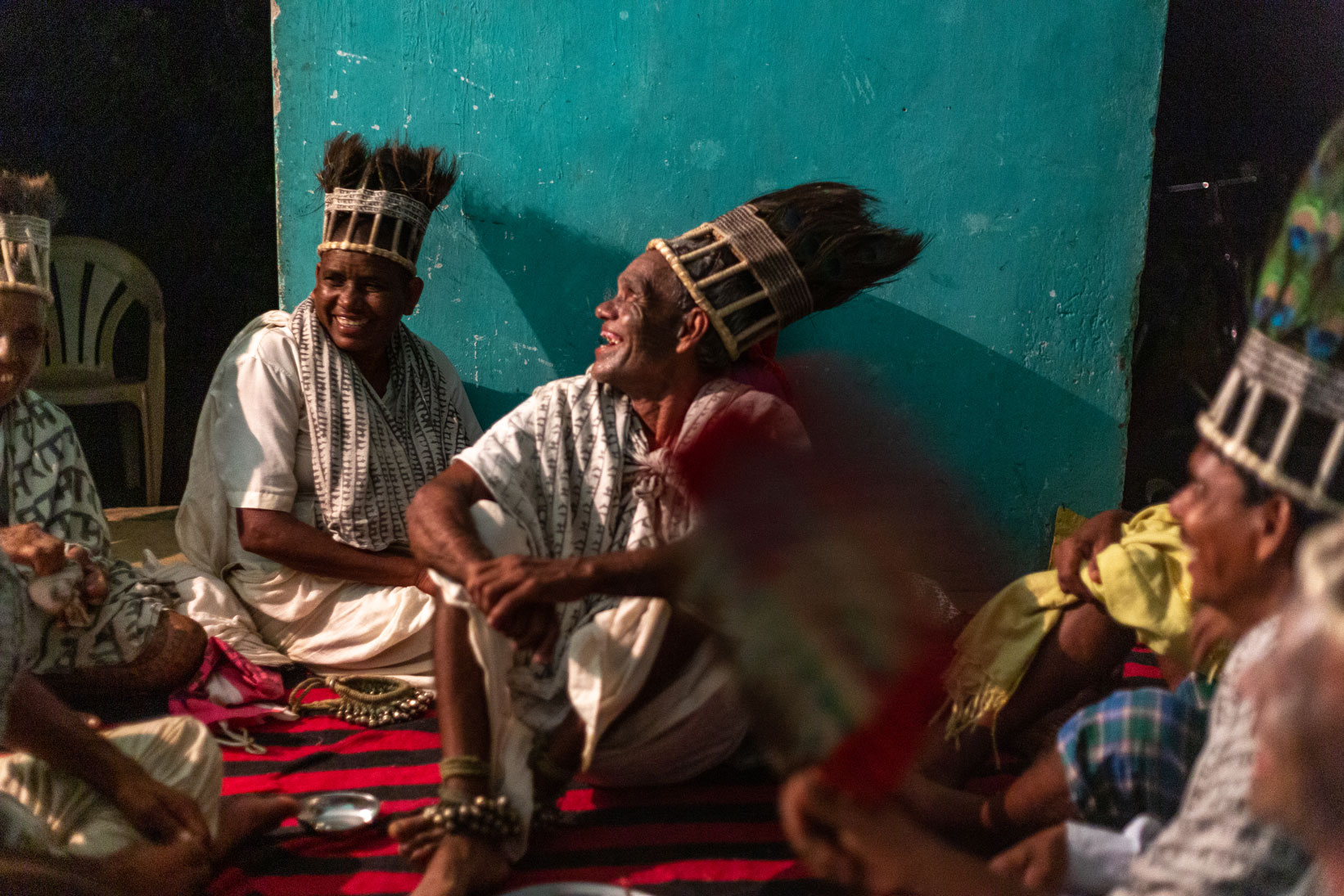
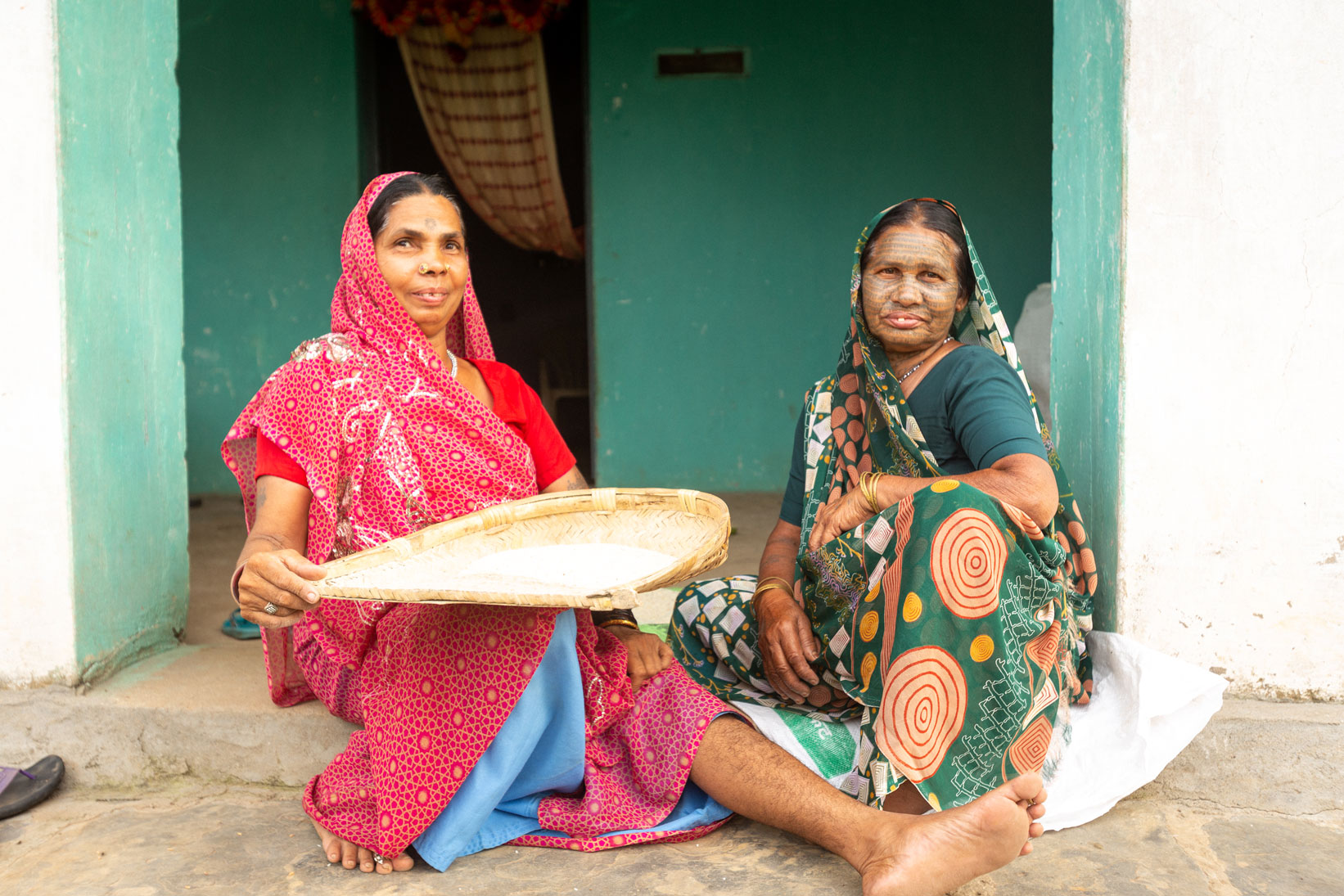
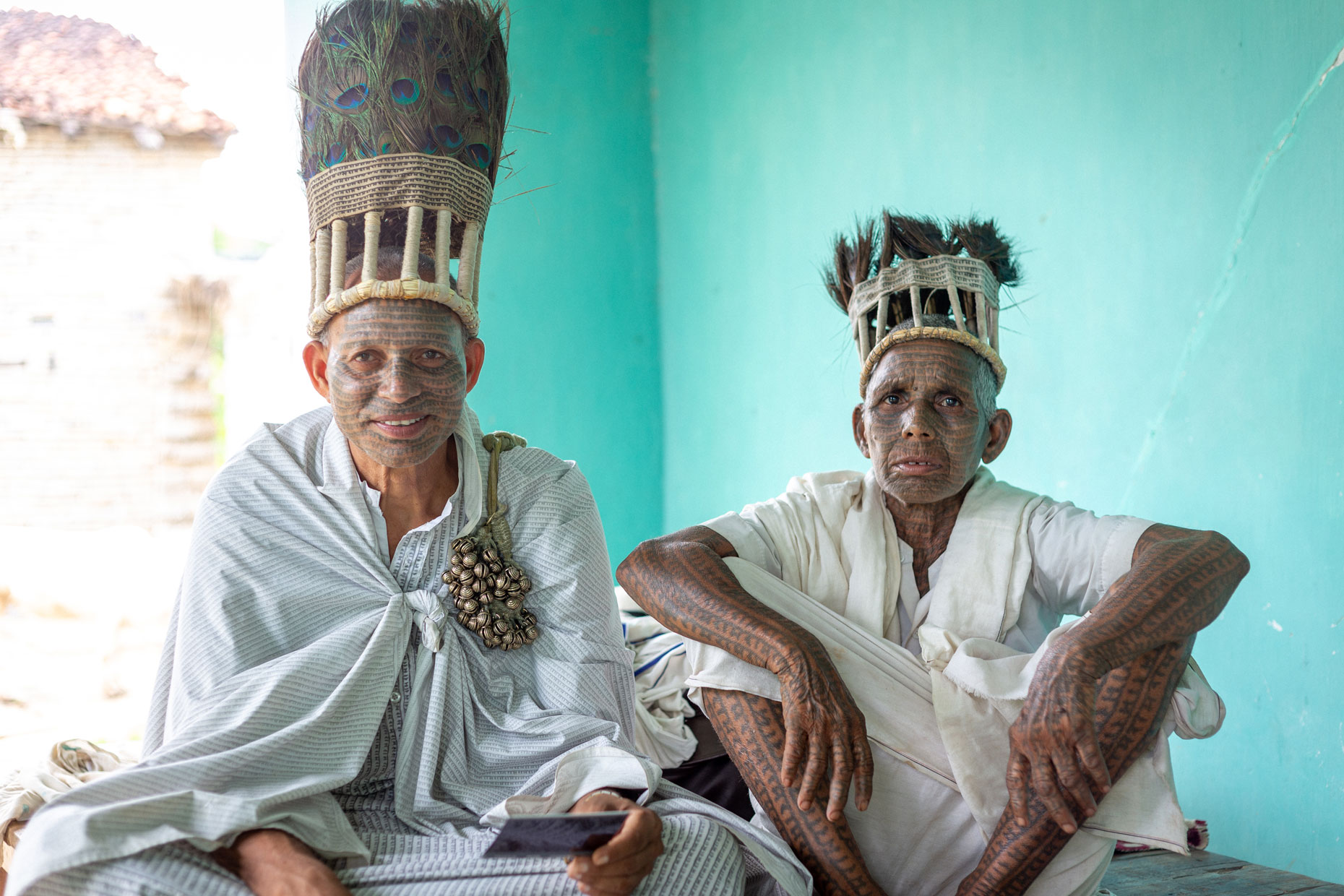
A Tattooed Community in India Is Dying Out
In a remote village, some of the last fully tattooed Ramnamis gather to chant their sacred mantras
Chhattisgarh, India. The relentless heat and humidity of the monsoon season engulfs the air and sends rivulets of sweat running down my soaked shirt. I sit cross-legged on an old wooden bench as the light begins to fade over the crop fields in front of the old farmhouse. Cows low gently and thousands of insects prepare for their nightly orchestra. Next to me Phunia Bai Ram sits smiling, chewing loudly on a piece of warm bread and talking to me, seemingly all at once. Her Chhattisgarhi dialect is foreign to me, but I can make out what she wants to tell me, as she points to her mouth and shyly sticks her tongue out, then points to her eyelids.
Her tiny frame is wrapped in a cotton, sari-like garment, covered in Hindu script, the name Ram repeated over and over. The same script forms tattoos that cover her face, arms, legs and every visible part of skin, and evidently her tongue and eyelids too. I ask, with my best sign language, if she would stick out her tongue again, slowly this time, but she just giggles and shakes her head no. I have never seen a tattooed tongue before. At over 90, she still has her wits about her. I join in the giggling that seems to have spread to the others. Relaxing on old plastic chairs and mats that are propped up against the walls of the spacious patio, some of the last fully tattooed Ramnamis sit, sipping cups of sweet tea and tearing off chunks of freshly baked bread.
The giggling grows in intensity. Everyone joins in, and it seems obvious that the subject of hilarity is me. Mehattar Ram Tandon, my amiable host and patriarch of this household, is discussing whom I should be married off to. They have decided on a relative in the village and eagerly discuss the details of our union, amid peals of laughter. I imagine their gentle banter fills this porch on many occasions and is always in good humor. But in this case it also reveals the stark reality of most women in India.
A single woman is not something easily understood, especially one who travels around the world alone, making films — certainly a man’s job!
I have been a filmmaker and photographer for many years, and my work has taken me from palaces in the Middle East to shamans in the Amazon, famous musicians, stuffy corporate offices and more. But exploring far-flung places and cultures is what I love best. In most countries, filmmaking is still male-dominated, and in India even more so.
I first met the Ramnamis in late 2010, when I began a six-week-long journey that took me from Kathmandu in Nepal through central India and finally to Kerala in the South. I had become fascinated with the tattooing practices of indigenous cultures and began a trek to document my work. I wanted to understand what was at the core of these tattooing rituals, the designs themselves, and how tattoos embody the culture and spiritual practices of so many peoples across the world. Little did I know it would take me 10 years to complete the film I had in mind.
The Ramnamis often tell slightly different stories of the origins of their tattooing tradition, but some tales remain consistent. It all began with a man named Parusaram, who was suffering from leprosy. He received a vision in which he was told that if he tattooed the name of the Lord Ram on his body, he would be cured. As the story goes, he did just that and was cured. So began the tradition that has lasted almost 120 years.
The Ramnamis are considered Dalits — untouchables, lower-caste people whose place in life deserves the least respect. In fact, Dalits are traditionally not allowed to worship the god Ram, who is considered a “high-class” deity, which makes this tradition even more unusual.
As the evening draws on, rice is sifted, cooking fires are lit, vegetables are picked from the fields, and people begin to arrive, filling the patio with chatter. These are the last of the fully tattooed Ramnamis — less than a dozen are left among the living, and I feel so fortunate to be in their presence. Soon they will be gone, and all that will be left are their stories.
Tirth Ram and his wife, whom I met on my first trip to this region, tell me they were tattooed over three full days by a local man. There was no fixed age to do the tattoos, but it seems most were tattooed in early adulthood. Burnt charcoal served as ink and a simple needle was used. The pain must have been incredible, but Tirth speaks only of his faith.
Some of the younger Ramnamis have turned up for the feast and no doubt to stare at the strange foreign woman. Very few wear the Ramnami tattoos, and none have chosen to tattoo their faces. The elders have always worked the fields, but these youngsters dream of working in cities, where tattooed faces would bring ridicule. A young man stumbles drunkenly across the patio and is gently shooed away by the elders. Alcohol and cigarettes are taboo among these Ramnamis.
After a long dinner of mountains of rice, vegetable curry and fresh bread served on giant tin plates, they slowly prepare themselves for the night’s activities. They wear tall straw hats decorated with peacock feathers. The peacock represents purity of spirit and is a symbol of the Ramnamis’ way of life. Anklets covered in small jingling bells are fastened. A giant, dog-eared book is placed in the center of the circle. This book contains all the sacred chants of the Ramnamis, the Ramcharitmanas.
Since the tradition began, the Ramnamis have made an annual pilgrimage, traveling for miles to reach a riverbank where they spend three full days and nights chanting. This tradition began as a promise by Parusaram to honor the god Ram and thank him for the healing the tattoos had provided. As these Ramnamis grow older, these journeys become more difficult, but this meeting and feast are a simpler affair.
Their singsong voices ring out through the night, competing with the frogs in the nearby pond. One of the older men stands up and begins to dance, his anklet of bells creating a hypnotic rhythm that blends with the chants, voices high, voices low, the faces of the worshippers transported in bliss.
Dawn is almost breaking when the last of them lie down to rest, spread out on mats across the floor. They softly snore. Most of them are over 70 years old, some over 90. Their devotion is inspiring.
The Ramnamis rise with the sun. Without any toilet facilities, each grabs a small bucket of water and heads out to the fields. Mehattar Ram laughingly tells me to choose a field that isn’t his. A short stick is used to clean the teeth. A pond at the back of the house serves as a wash place, and any ablutions are always done during the day. Without any form of lighting, it is pitch black at night and no doubt teeming with frogs and other nocturnal creatures. Not knowing the protocol, I had asked to wash at night and was directed instead to the cow enclosure, where I crouched in the dark, pouring water over myself. I tried not to scream when my feet were bitten by what felt like a hundred fire ants. Invisible in the dark, they were angry at my intrusion. But I couldn’t be sure that moving would not mean bumping into a concealed cow or stepping in a giant cowpat.
Breakfast begins with the ever-present sweet tea, served with milk fresh from one of the cows. While the elders sit outside in the morning sun, the children prefer to be inside. An old TV sits in the corner of their living room, and Arnold Schwarzenegger struts across the screen, macho as ever, and delivers what should be a scorching repartee, but this time in Hindi, high-pitched and anxious. The children sit in awe of this American hero, no doubt dreaming of a life far from this sleepy village of cows, rice fields and humid summers.
I envy their innocence: the simplicity of their lives, surrounded by family, their diets as organic as any ardent yogi could wish for, and their unwavering faith in the power of their god Ram. Whether Ram offers them salvation I will never know, but the power of belief is strong medicine. In the West we call it “the placebo effect.” Perhaps it should be a medicine in and of itself.
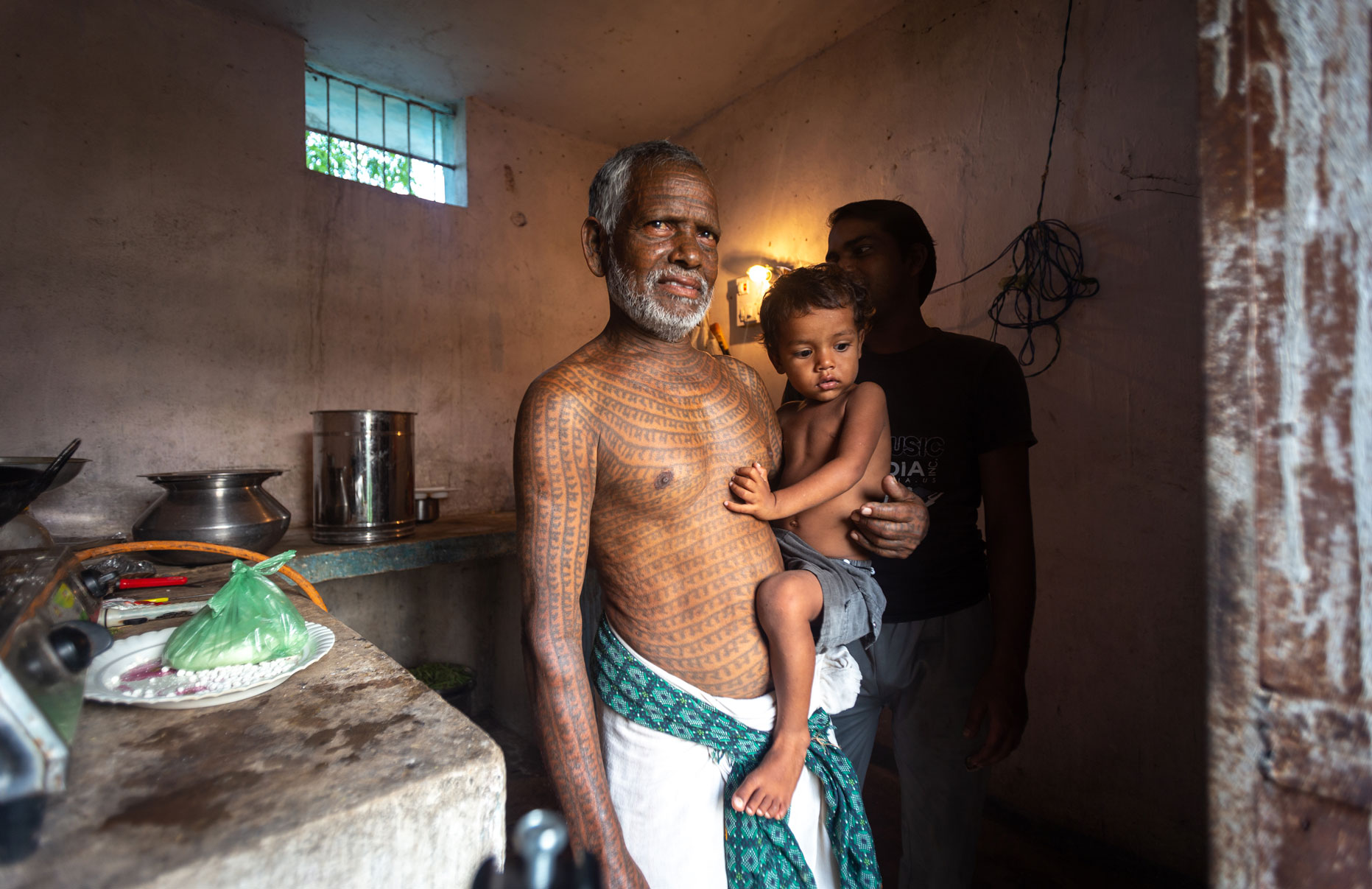
Mehattar Ram Tandon with his grandson in the kitchen. Photo by Maellyn Macintosh
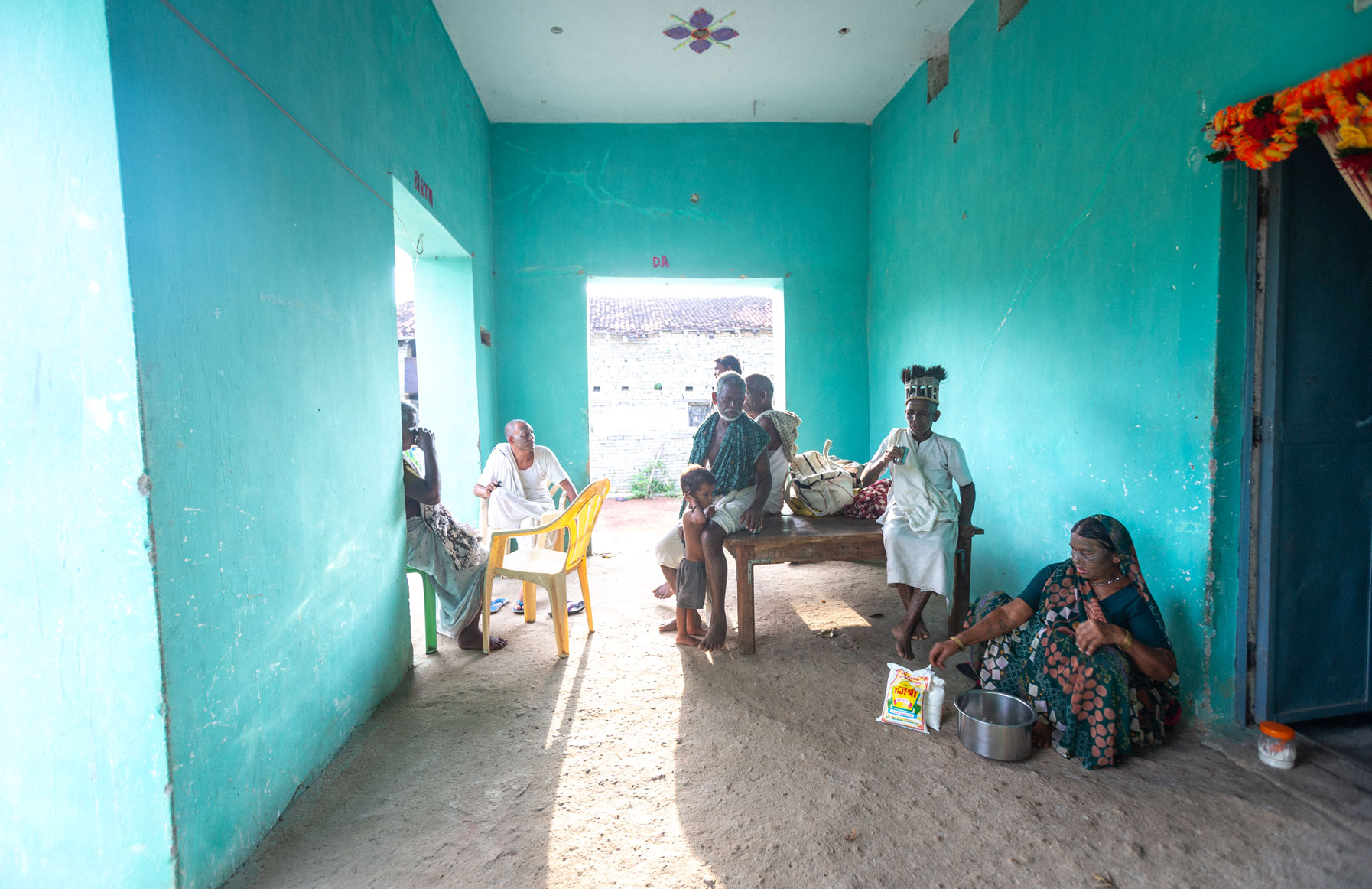
Enjoying a morning cup of tea on the patio. Photo by Maellyn Macintosh

Tirth Ram and Phunia Bai Ram, sitting on the patio. Photo by Maellyn Macintosh
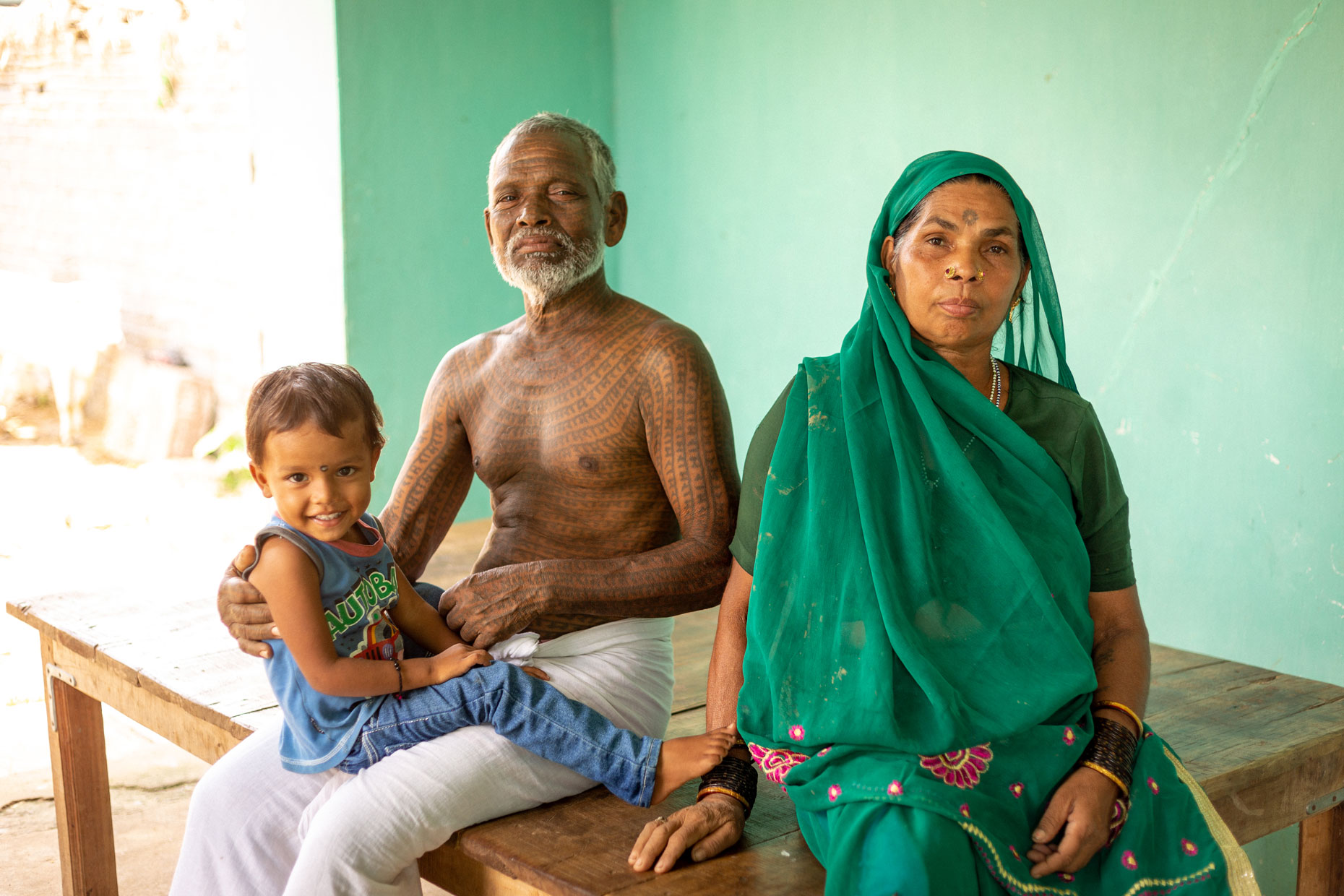
Mehattar Ram Tandon with his wife and grandson. Photo by Maellyn Macintosh
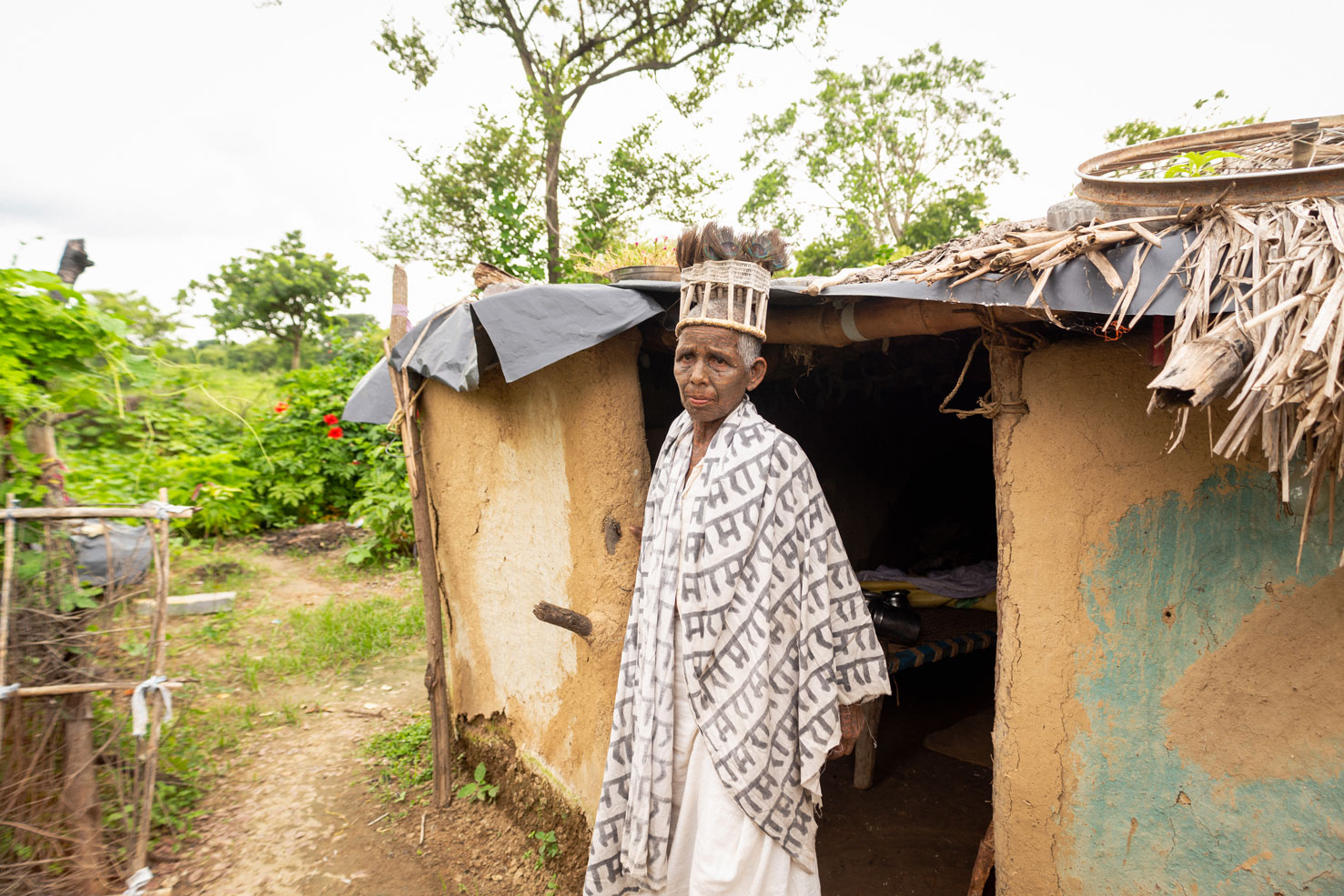
Phunia Bai Ram outside her small home. Photo by Maellyn Macintosh
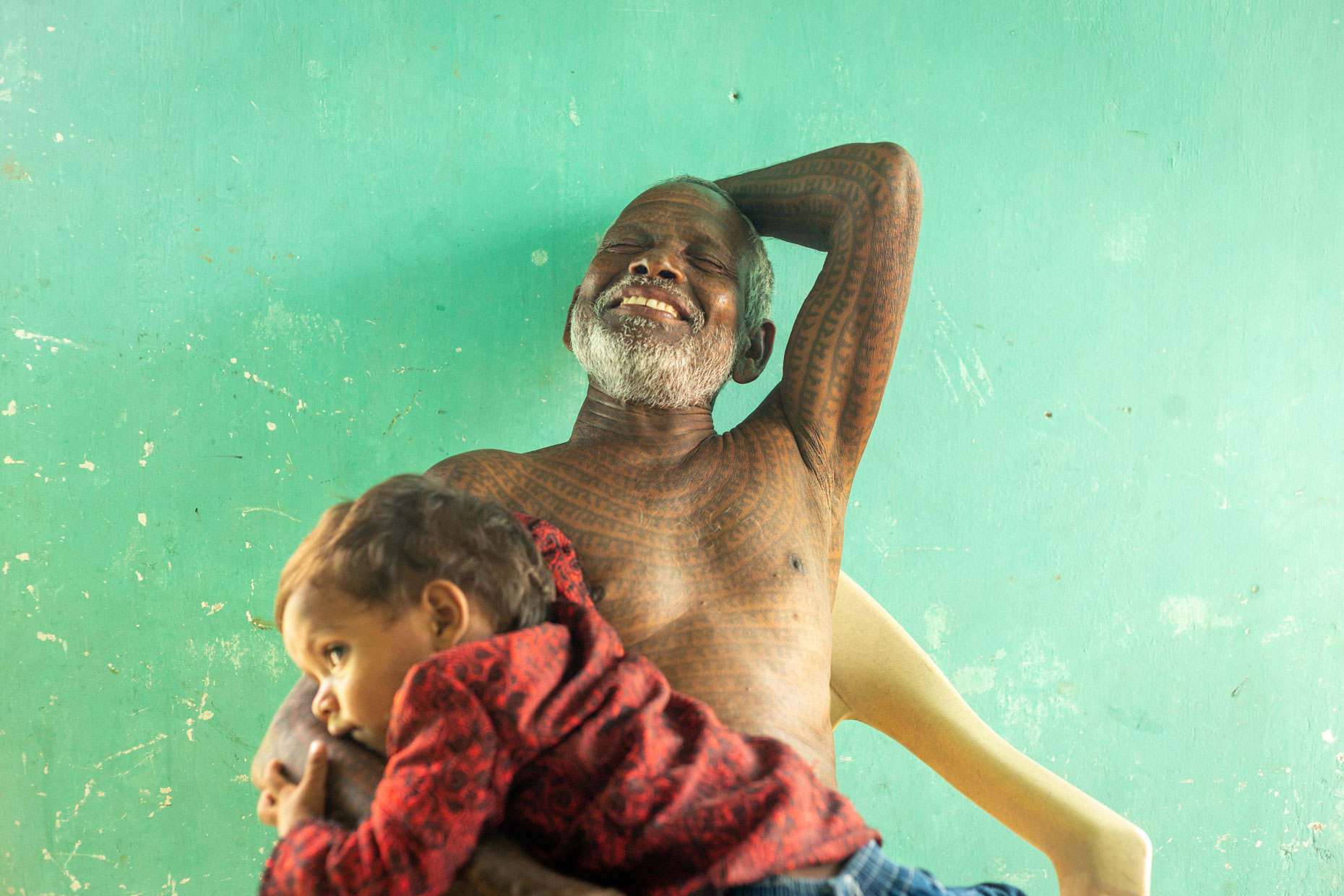
Mehattar Ram Tandon laughing at the prospect of the author’s marriage. Photo by Maellyn Macintosh

Rice is sifted and prepared for the evening meal. Photo by Maellyn Macintosh
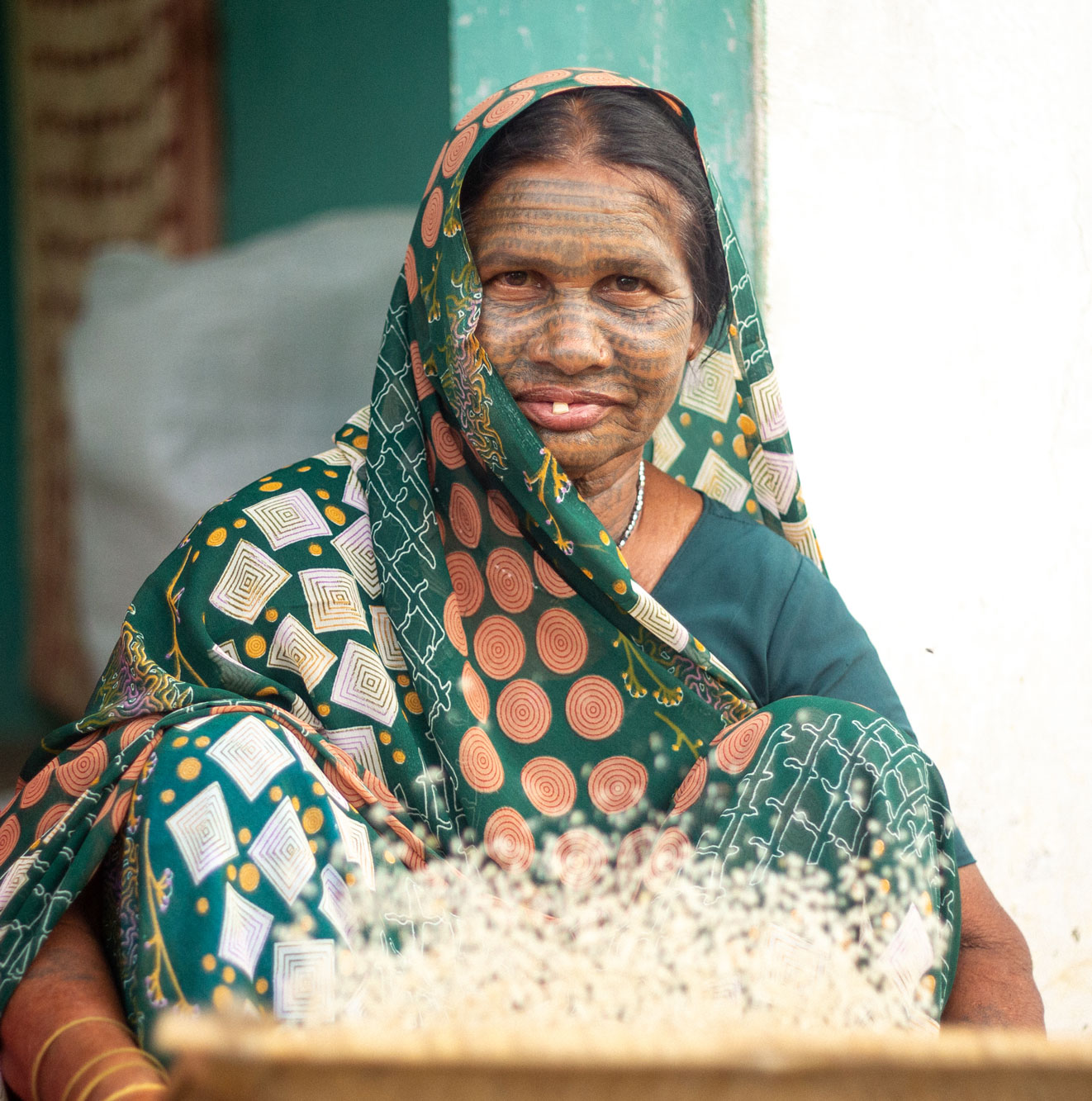
A Ramnami elder smiles for the camera as she sifts rice for the evening meal. Photo by Maellyn Macintosh

The elders share a moment during a break from chanting. Photo by Maellyn Macintosh
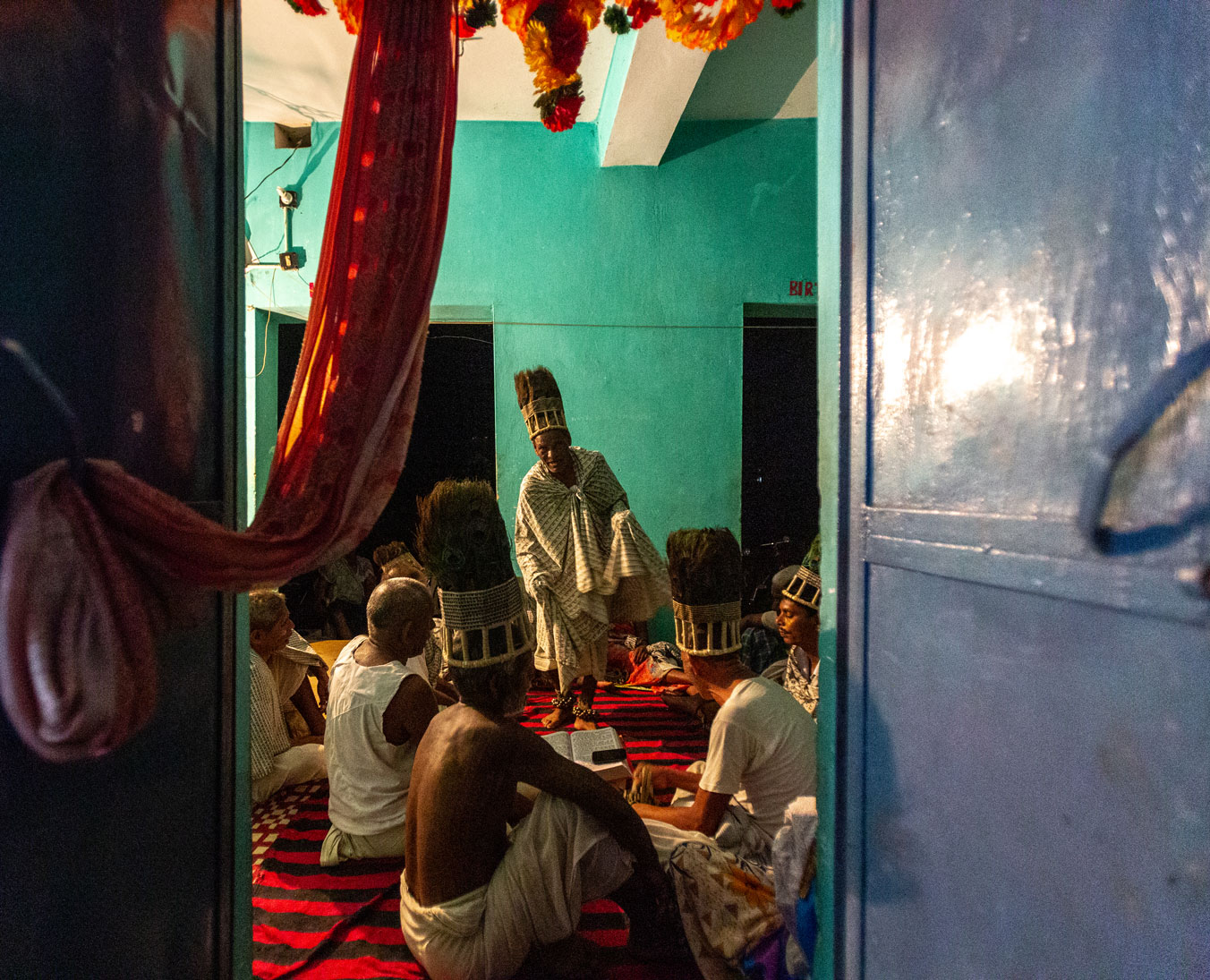
An elder dances, the bells on his feet chiming as the group chants their sacred mantras. Photo by Maellyn Macintosh


